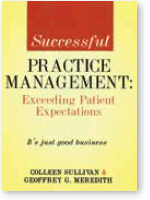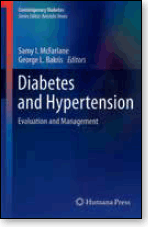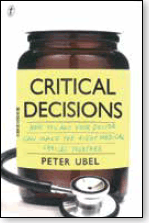Successful practice management: Exceeding patient expectations
Colleen Sullivan, Geoffrey G Meredith
Australia: Lulu.com, 2012
ISBN 978 3002 830 89, $76.75
 This book is written by two stalwarts of the practice management scene: Colleen Sullivan has been spokesperson for the Australian Association of Practice Managers and worked with other specialist colleges, and Geoffrey Meredith, who has worked in small business management and was involved in the establishment of the Professional Practice Manager Program. Both authors have previously taught and written on the topic of practice management and it comes through in this book.
This book is written by two stalwarts of the practice management scene: Colleen Sullivan has been spokesperson for the Australian Association of Practice Managers and worked with other specialist colleges, and Geoffrey Meredith, who has worked in small business management and was involved in the establishment of the Professional Practice Manager Program. Both authors have previously taught and written on the topic of practice management and it comes through in this book.
Practice Management is built around following a patient through the practice in seven stages, from patient referral through to post-consultation follow up.
This approach allows the authors to give pointers around how to make the patient feel safe and supported, and to minimise their difficulties moving through these stages while making the process safe, predictable and financially sustainable for the practice.
This book provides worksheets and prompts to encourage the reader to consider different factors about the practice such as estimating costs per patient consultation, providing value to the patient with clear follow up, and having programs for post-consultation patient contact.
After discussing the seven stages of the consultation, this book goes on to look at other factors for smoother practice management, such as a chapter on removing barriers to patients getting value in the practice – waiting times, waiting areas, clear administration procedures and the clinician providing best value in the consultation.
Chapter 10 is around developing assets – technology and data systems, personnel and their training. Chapter 11 covers image building and forward practice planning.
Chapter 12 looks at compliance – fulfilling the privacy act, competition and consumer act requirements, accreditation and financial/corporation requirements.
Some of the book is more applicable to procedural practices – general surgical, ophthalmic, orthopaedic, and gynaecological – where the patient has a referral from outside – and then post-consultation procedure or hospital admission and the practice management around this.
However, the majority of this book is applicable to all practices. It is clearly written and is in the form of an accessible workbook, rather than a didactic textbook. It reflects Australian practices and is written by two Australians with extensive experience in the area. I would recommend this book to every medical practice, and medical practitioners thinking of starting a practice would benefit also, particularly from the suggestions relating to practice workflow, which would greatly assist in the establishment of a new practice.
Dr Simon Wilson
Castlemaine, Vic
Diabetes and hypertension: Evaluation and management
Samy I McFarlane and George L Bakris, editors
United States of America: Humana Press, 2012
ISBN 978 1603 273 565, $180.00
 Diabetes and Hypertension, which consists of 14 chapters and 190 pages, has its strengths and weaknesses. Overall, I did find this book difficult to read in large parts, due to the extensive amount of details provided and the way it is written. Chapters 1 and 2 are a good example of this. The first chapter presents data from the Centers of Disease Control and Prevention National Center for Health Statistics from the United States of America. Although this chapter is called ‘Epidemiology’, it contains purely descriptive data and has lots of tables in it. It reads more like a journal publication of a clinical trial than the first chapter of a book.
Diabetes and Hypertension, which consists of 14 chapters and 190 pages, has its strengths and weaknesses. Overall, I did find this book difficult to read in large parts, due to the extensive amount of details provided and the way it is written. Chapters 1 and 2 are a good example of this. The first chapter presents data from the Centers of Disease Control and Prevention National Center for Health Statistics from the United States of America. Although this chapter is called ‘Epidemiology’, it contains purely descriptive data and has lots of tables in it. It reads more like a journal publication of a clinical trial than the first chapter of a book.
Another negative is that the chapters are written by different authors, which leads to repetition and lack of continuity. Abbreviations are also widely used throughout, some of which are not explained in the glossary.
The strength of this book is its breadth and detail, but at the same time this is what makes it difficult to read. The fourth chapter, which deals with hypertension and chronic kidney disease, is well written and also mentions lifestyle modifications as part of treatment. I found Chapter 8 to be excellent, and probably the best part of this book: ‘hypertension, diabetes, and the eye’. The fundoscopy photos shown are of good quality and the explanations are excellent. The information provided is relevant and this chapter is actually easy to read.
Chapter 12 and 13 have a focus on prevention, diet and lifestyle modification and are hence more relevant to primary care providers. Chapter 14 presents novel pharmacological approaches in hypertension treatment and is interesting for any reader.
Every chapter of this book provides interesting and important information regarding risk factors, treatment and causes of hypertension and type 2 diabetes, but the presentation and readability varies from chapter to chapter. Overall, Diabetes and Hypertension is not easy to read and goes well past the knowledge needed to treat and address hypertension and type 2 diabetes in general practice. The chapters present expert knowledge and certainly bring any reader up-to-date with latest management strategies and epidemiological data.
I recommend this book to those readers who have a special interest in diabetes and hypertension.
Dr Heinz Tilenius
Melbourne, Vic
Black bag moon
Susan Woldenberg Butler
London: Radcliffe Publishing Ltd, 2012
ISBN 978 1846 199 707, $33.00
 I followed my father – and before him my grandfather – into general practice, a much altered, somewhat maligned but still privileged means of making a living. The art of medicine lies in listening, sifting, never assuming and sometimes living with uncertainty. Despite the humbling advance of modernity, the care of individuals still demands an attention to the person which, though seemingly anachronistic, remains the main game. What science says is true for most, misleads for some. And, for the individual, it may falsify utterly. No scan or program or assay can outdo empathy. Compassion cannot be outsourced.
I followed my father – and before him my grandfather – into general practice, a much altered, somewhat maligned but still privileged means of making a living. The art of medicine lies in listening, sifting, never assuming and sometimes living with uncertainty. Despite the humbling advance of modernity, the care of individuals still demands an attention to the person which, though seemingly anachronistic, remains the main game. What science says is true for most, misleads for some. And, for the individual, it may falsify utterly. No scan or program or assay can outdo empathy. Compassion cannot be outsourced.
In her latest volume – Black Bag Moon – Susan Butler describes this complex and varied profession of ours through carefully crafted stories based on the lives of Australian GPs. The nine medicos in these tales are fictional, but their source is in the lives of the many Butler has observed, heard and quizzed over many years as a GP’s wife, receptionist, practice manager and much more. Butler takes the unusual step of speaking in the first person for each of these men and women as their stories unfold in a series of brief cameos and anecdotes. She describes her doctors richly, their environs clearly, the characters readily recognisable, the presentations familiar indeed.
Through their musings we learn not just about their patients – the plain and the weird – but of their own internal workings, their domestic grief, their troubled nights, their professional doubts. Butler manages to capture the complexity of our lives in general practice as we try to help others. Her characters range across the clinical kaleidoscope – some honourable, some objectionable, all recognisable and at times way too familiar. They deal with the gamut of other people’s emotions and they struggle with their own imperfections with at times breathtaking candour.
Although at times I found her doctors downright annoying – offensive even – and their reflections implausible or whacky – I realised that the author had in fact managed to perform an impressive authorial manoeuvre. The complex, unpredictable, misunderstood profession that I watched my grandfather and my father perform in their own special way, and which I’ve followed myself – at times reluctantly – these past 3 decades, is well served by Butler. The near insider has watched us and described us and allows us to scrutinise who we are and what we do. It’s a sophisticated feat, though the tales themselves reflect the banality and cringe worthiness of much of what passes for the human condition. She’s captured us well and it deserves to be read by its subject material – you and me, the Australian GP.
Dr Bill Williams
Torquay, Vic
Critical decisions: How you and your doctor can make the right medical choices together
Peter Ubel
Australia: The Text Publishing Company, 2012
ISBN 978 1922 079 015, $32.99
 It is 1995 and Ubel is paged to the operating theatre. Not because he is a surgeon or anaesthetist, but because, along with being an internist, he is the hospital ethics consultant. The surgeon faced a dilemma. The surgery would need to be more extensive than anticipated and removing a cancer would leave the patient mute. Should the surgeon proceed or stop the surgery, wake the patient and seek consent? Having set the stage with this and other palpably real cases, Ubel traces the history of the move away from medical paternalism towards patient participation in medical decision making.
It is 1995 and Ubel is paged to the operating theatre. Not because he is a surgeon or anaesthetist, but because, along with being an internist, he is the hospital ethics consultant. The surgeon faced a dilemma. The surgery would need to be more extensive than anticipated and removing a cancer would leave the patient mute. Should the surgeon proceed or stop the surgery, wake the patient and seek consent? Having set the stage with this and other palpably real cases, Ubel traces the history of the move away from medical paternalism towards patient participation in medical decision making.
The story he tells is of a transition that has been neither smooth nor easy, but rather punctuated with legal cases, false starts and unhelpful pendulum swings. He discusses the impact of the information age, particularly the phenomenon of well intentioned doctors thinking they are assisting patient empowerment in decision making by providing lots (and lots) of facts – ‘now you have a Gleeson score 6 prostate cancer and it is in only three of the 12 scores …’ and still miss the emotional impact of the communication. He talks about how we as doctors use facts to deflect the emotional pain of bad news and how just handing decisions over to patients, armed with facts but not a lot of knowledge, can be just as ethically misguided.
Ubel was trained in philosophy, then medicine and behavioural science. He ensures that each step of the journey he is taking us on has a backdrop of references to research or patient cases. He introduces us to the worlds of behavioural economics, decision psychology and decision aids. His destination is a model of interaction between doctors and patients characterised by shared decision making and physician recommendation informed by patients’ values and goals. Then he candidly observes how the whole endeavour can come tumbling down as he describes the recent diagnosis of his wife’s breast cancer. His reflection on being asked by the surgeon, while his wife was still anaesthetised, as to whether the surgical team should extend his wife’s axillary dissection is poignant and disarming, particularly in contrast to his opening chapter.
This is an interesting, insightful and thoughtful book. It is intriguing. It is written for patients but I can’t help but feel it’s doctors he really wants as readers. There is a moderate amount of cultural translation required. General medical internists have a much more hospital focused practice than Australian GPs. His writing style is engaging and entertaining, though I wonder if it is too technical for a lay audience. I have made a start at changing the way I consult following reading this book. I recommend you read it too.
Professor Andrew Bonney
Wollongong, NSW